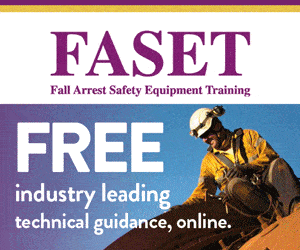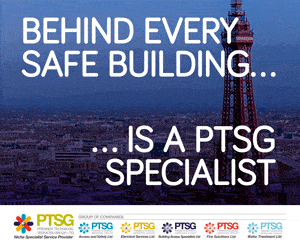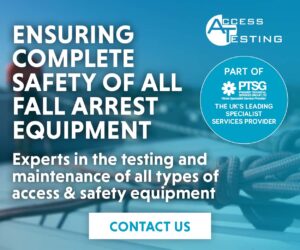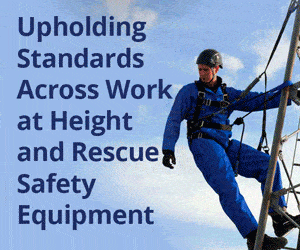Roll cages are vital within supply chains for the storage and transport of goods. For instance, storing and transporting milk from one retailer to another; or transporting boxes of electronics equipment between distributions centres, and onto a retailer; or transporting post and parcels between postal partners, post offices, logistics centres and delivery bases – roll cages enable organisations to organise and transport goods safely and effectively.
Irrespective of who owns them, be it the manufacturer, distribution centres, 3PLs, freight operators, or poolers, they all suffer one common challenge: roll cages do just disappear and go missing forever or go dark for a while. This can be down to a number of reasons including extended borrowing, hoarding, theft and misuse.
Regardless of the reason, the consequence is an increased cost to the owner or operator, and highly likely poor operational efficiency for the wider supply chain – or party – that is affected by losing access to a roll cage at the right time in the right place. Note, that its not at all only about replacement cost. It’s also about the cost of collection, redistribution, penalties, and insurance to mention a few.
Both Thomas Scheibel, CEO and Gareth Mitchell (pictured), UK Partner Manager, from Heliot Europe (UK) Ltd explain how organisations can track these vital, hardworking, underappreciated pieces of equipment more effectively, in order to maintain supply chain efficiency and enhance traceability.
Theft, misuse and human error are major culprits
Roll cages – also known as roll pallets – are manufactured from various kinds of materials including steel, aluminium and plastic. Unfortunately, these materials are perceived as a hot commodity for some criminals who choose to steal these pieces of logistics equipment with a view to recycling and profiting from them. This is largely because the supply of steel and aluminium is volatile, leading to rising demand and prices, making roll cages an easy target for some. Aside from this, some criminals steal roll cages to access the contents inside them – equally, though, sometimes staff theft between businesses is a problem that occurs. Both situations need monitoring.
Another common problem that many organisations face, as roll cages go missing, is that human beings are prone to error. By and large, roll cages look similar. People don’t pay close attention to the detail of what the roll cage looks like. Take this basic example, a delivery arrives from two different companies at the same time at a retailer’s depot. One delivery and roll cage is unloaded and transports milk, and the other delivery and roll cage transports beer. Both roll cages look similar and the person (or team) that is unpacking from either roll cage mixes the roll cages up accidentally, returning them to the wrong truck and company.
Anecdotally, this problem occurs all the time across a number of industries. It is a great pain, as organisations often have to work out which roll cages belong to them, which have gone missing, or which assets have entered their organisation by accident. Often this investigative process is manual and time consuming, resulting in further time and resource investments in logistics to send and return cages to correct owners. Surely this time could be spent on other more pressing matters for logistics operations?
Not to be forgotten: right place, right time, right volume
While criminal activity attracts lots of attention in operations, there is just the simple fact that without knowing where roll cages are in course of normal operations, diligent staff will make sure they always have enough of this key commodity at hand to support daily operations. The problem with this is that it can lead to hoarding, overbooking/usage of storage space, as well as inefficient intra-site logistics, and internal barter arrangements between site managers. This process and situation can be handled much more efficiently, and with lower inventory levels, if teams can easily and quickly answer the straightforward the question: “where is it?”
The balance between sustainability and costs
The other concern with the missing or invisible trolley over time is sustainability. If or when trolleys go missing, and when they end up in random places in the community, like rivers, then owners are subject to the same penalties for littering and fly-tipping from local councils that retail trolley owners come up against. The type of materials handling product is not exempt. Moreover, routinely replacing roll cages over time is not good for the environment or bottom line, especially if large postal services or retailers have to constantly replace missing trolleys.
The school of thought is that it’s better to keep a stronger view and tab on fleets of roll cages in order to plan logistics requirements and operations more effectively, and to promote a culture of re-using cages and properly maintaining them – instead of just replacing on a case-by-case basis. Besides this, the loss of roll cages has a substantial financial impact on the bottom line over time, as roll cage loss and replacements add up. Sure, replacing one or two cages at around £200 per roll cage may seem negligible for a business. But, what if you have a fleet or pool of 50,000 and lost 10% of your roll cages annually over five years? That would equate to around £1 million per year to replace, or £5 million over five years. This is not counting the loss and effects across the wider supply chain, and of productivity, in order just locate and sort out the problems associated with tracking and recovering cages.
Enabling traceability: the most simple radio devices in clever networks work best
The answer to this problem lies in enabling roll cages to tell us their whereabouts in the most efficient and affordable way to track them. What good is it having one staff member running around a distribution centre (DC) or facility playing hide and seek with roll cages? This is not a good use of anyone’s time. A better approach is to provide the supply chain with visibility of these cages.
An effective way to do this is to fit them with the most simple radio emitters and have them ping regularly for a reliable Machine Learning enabled data network to collect these pings, and then to place them on a digital radio map. Typically, the best kinds of radio emitters for these scenarios make use of data networks that combine GPS, LPWAN (Low Power Wide Area Network), SubGHz, and if need be WiFi -Sniffing, and which use AI to support with tracking roll cages within warehouses, depots, DCs and while they are in transit.
Heliot has been on a long journey over the last 5 years with over 1m of these roll cages being traced every day all over Europe. Our experience is that “less is more” and have developed methods to keep the complexity of the radio emitting devices as low as possible and have the network do all the work, i.e. no need for GPS or even WiFi Sniffing, both indoor and outdoor. And that at very low cost. The reason these kinds of radio emitters and LPWAN networks are effective is because they enable long range distances to be tracked effectively and accurately, especially LPWAN, and because they keep the amount of data transmitted to a minimum, and do not rely on a lot of energy to achieve results. This keeps data costs and device battery usage low and relatively inexpensive compared to cellular or other short range alternatives.
Taking this approach enables organisations to see exactly where roll cages are. For instance, logistics teams can set geo-fences that enable them to see when their cages leave their networks, so that they can be retrieved and reclaimed – but also it helps teams to plan how many roll cages they may or may not need at any given point in time to run their logistics operations. What is more, when the right kind of LPWAN network is used, it’s entirely possible to track roll cages as they travel between towns, counties, and even countries across Europe, and the rest of the world. Ultimately, today, this kind of transparency and tracking data is valuable. It keeps the entire supply chain informed and gives the owners of these assets peace of mind that they know where their assets are at any given time.
Conclusion
Roll cages help keep supply chains organised and moving. Yet, their loss due to theft, misuse, or human error creates operational inefficiencies and financial strain. Beyond cost implications, missing roll cages also impact sustainability and logistics planning. By using sensor-based tracking solutions, supply chain teams and organisations can gain access, visibility and transparency about the state of goods and assets in transit in ‘real-time’. This helps keep supply chains fluid, and supports with teams planning operations effectively.
Finally, investing in these kinds of tracking solutions – from sensors to data connectivity – is not just about security and confidence. They enable organisations to meet their sustainability commitments, and to keep costs low. Together, all these factors help ensure that supply chain teams are in a strong position to meet the demands of modern logistics operations, and to track these assets more effectively moving forward.
























































